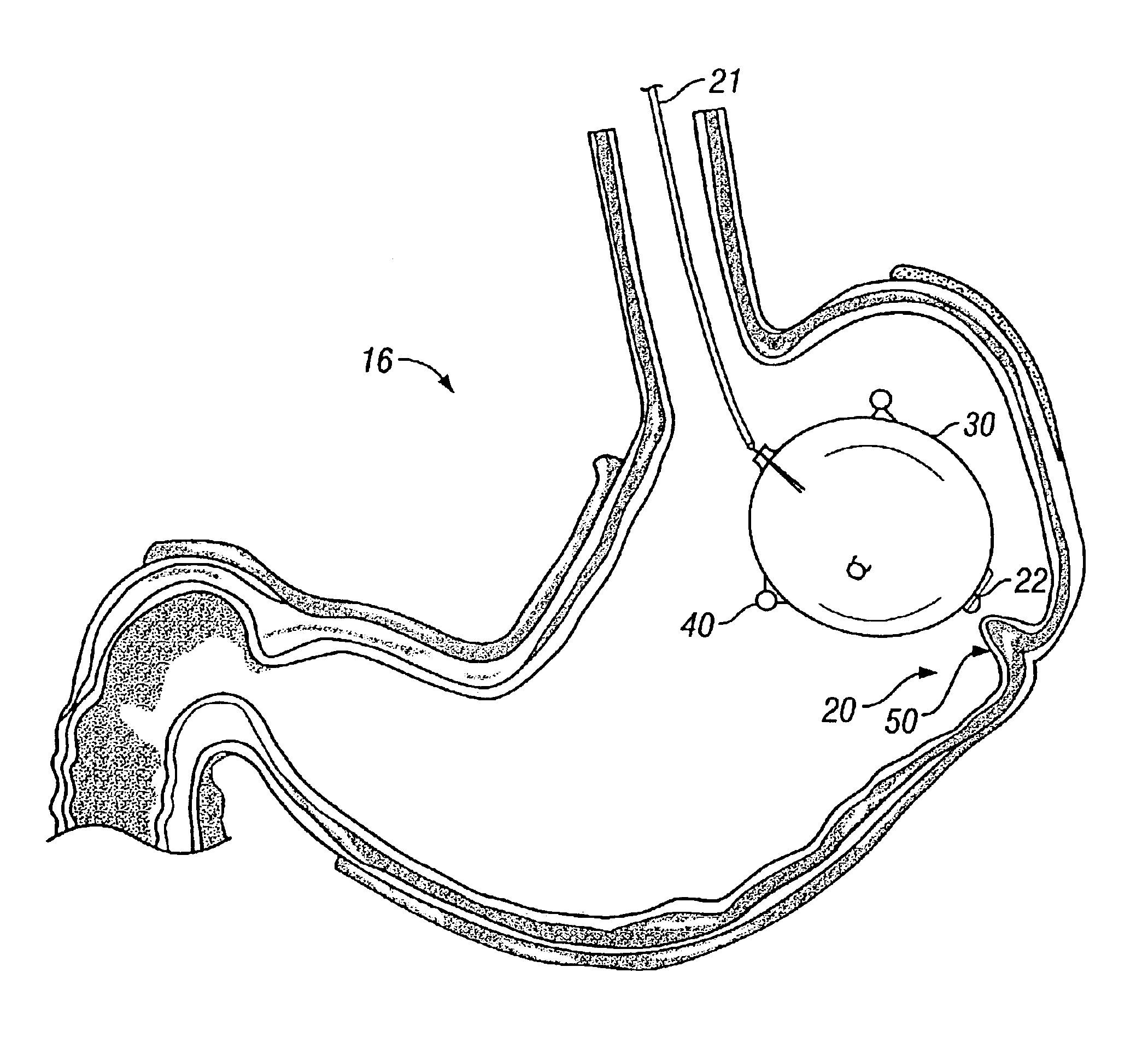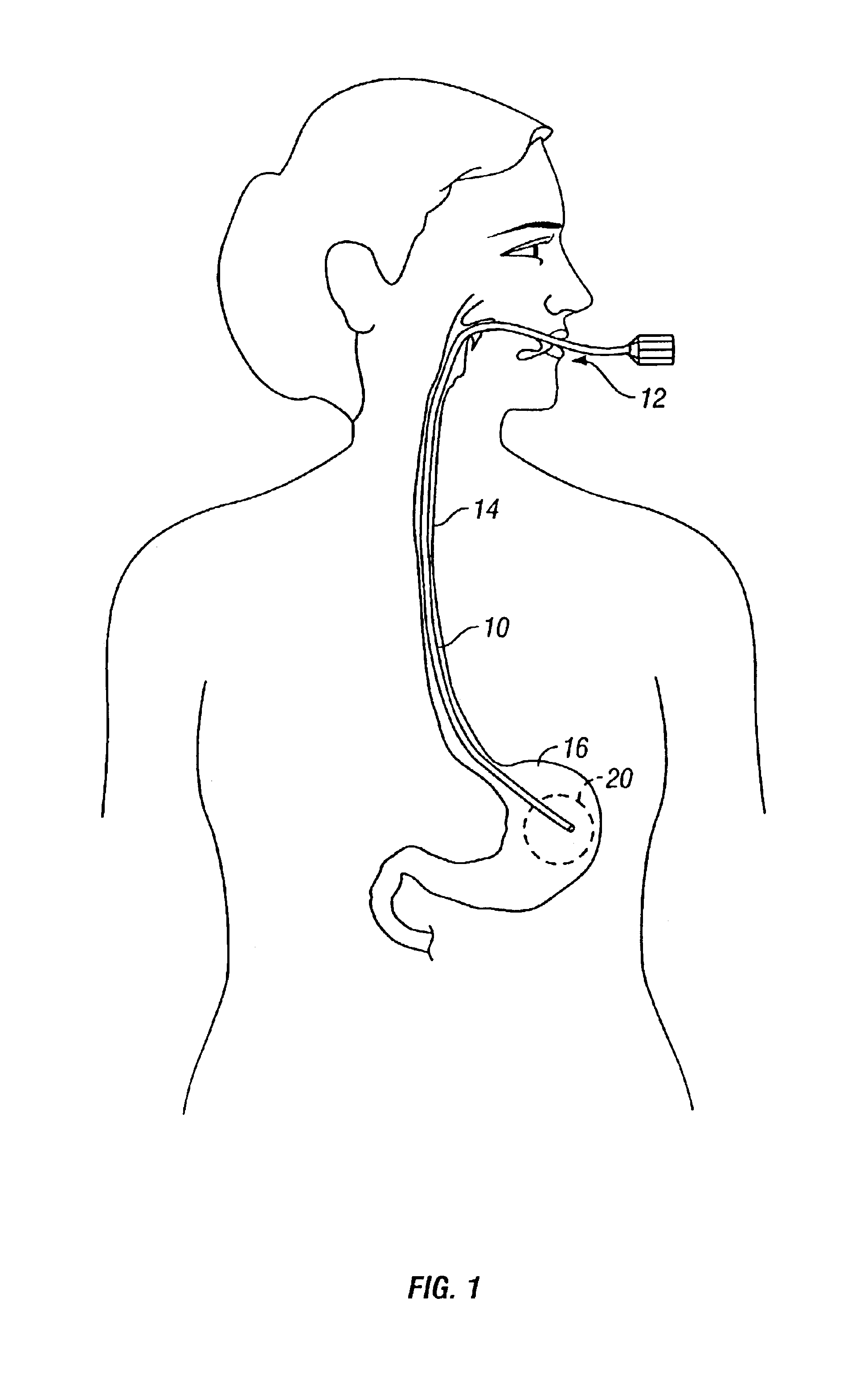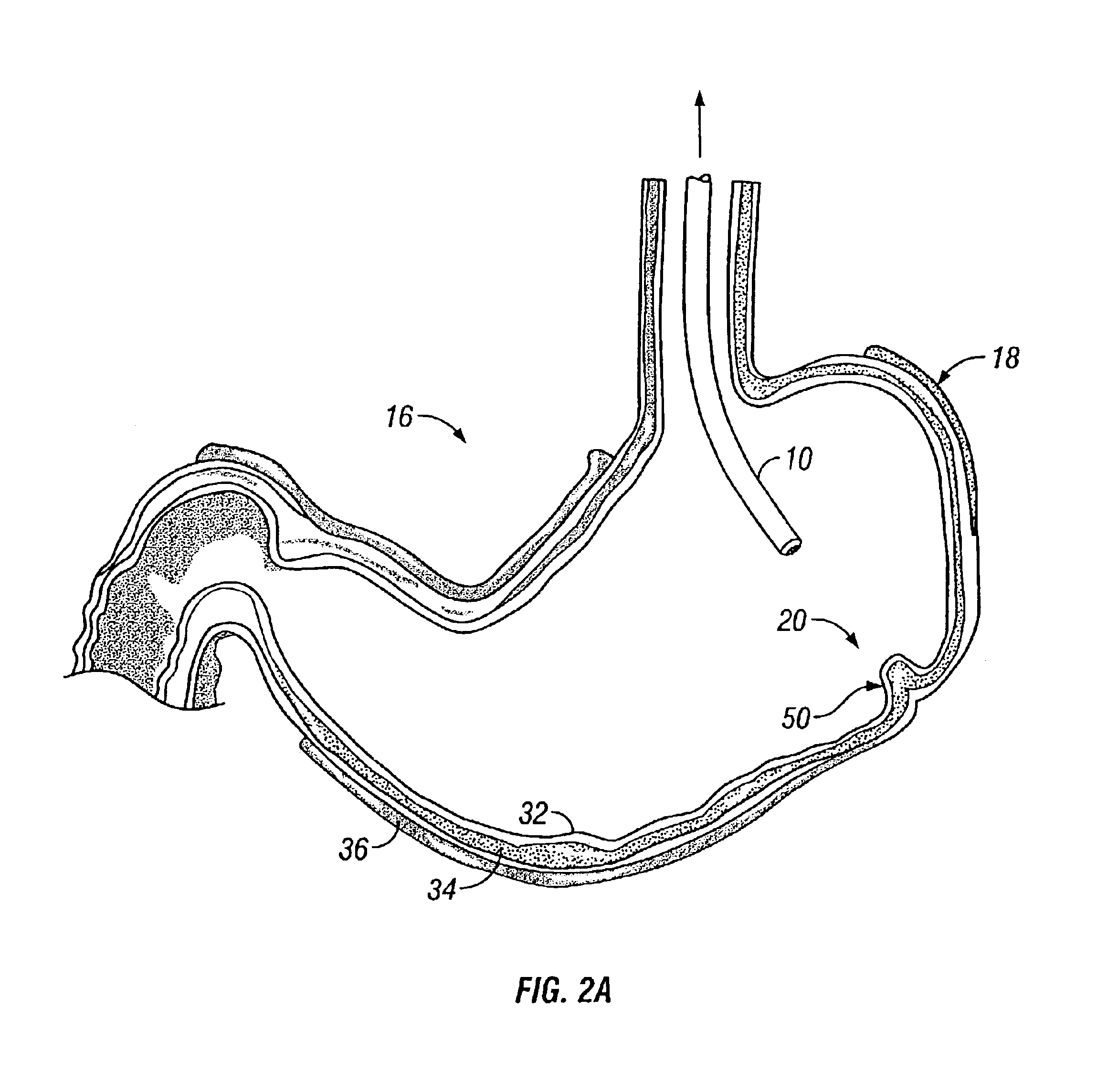Intra-gastric fastening devices
a technology of intra-gastric and fastening, which is applied in the field of medical devices and methods, can solve the problems of large incisions and long recovery time, unsatisfactory robustness of the device, and insufficient security of the device within the stomach, so as to reduce the risks associated with the procedure and the effect of facilitating access
- Summary
- Abstract
- Description
- Claims
- Application Information
AI Technical Summary
Benefits of technology
Problems solved by technology
Method used
Image
Examples
Embodiment Construction
[0025]Expandable devices that may be inserted into the stomach of a patient may be maintained within the stomach by anchoring the device to the walls of the stomach using intra-gastric fasteners. Although the fastening devices described herein describe anchoring within a stomach, this is merely illustrative and the fasteners may be utilized in any hollow body organ or interior body space for temporarily or permanently anchoring expandable devices to tissue. FIG. 1 illustrates a delivery endoscope 10 which may be used to deliver the expandable devices as well as the fastening devices into, e.g., stomach 18 of a patient. Endoscope 10 is shown as having been advanced through the mouth 12 and esophagus 14 of the patient to position the distal end of endoscope 10 within a region of interest 20 within stomach 16.
[0026]FIG. 2A shows a cross-sectional view of stomach 16 within which endoscope 10 has been positioned adjacent to region of interest 20. At least one tissue fold 50 is formed fro...
PUM
 Login to View More
Login to View More Abstract
Description
Claims
Application Information
 Login to View More
Login to View More - R&D
- Intellectual Property
- Life Sciences
- Materials
- Tech Scout
- Unparalleled Data Quality
- Higher Quality Content
- 60% Fewer Hallucinations
Browse by: Latest US Patents, China's latest patents, Technical Efficacy Thesaurus, Application Domain, Technology Topic, Popular Technical Reports.
© 2025 PatSnap. All rights reserved.Legal|Privacy policy|Modern Slavery Act Transparency Statement|Sitemap|About US| Contact US: help@patsnap.com



